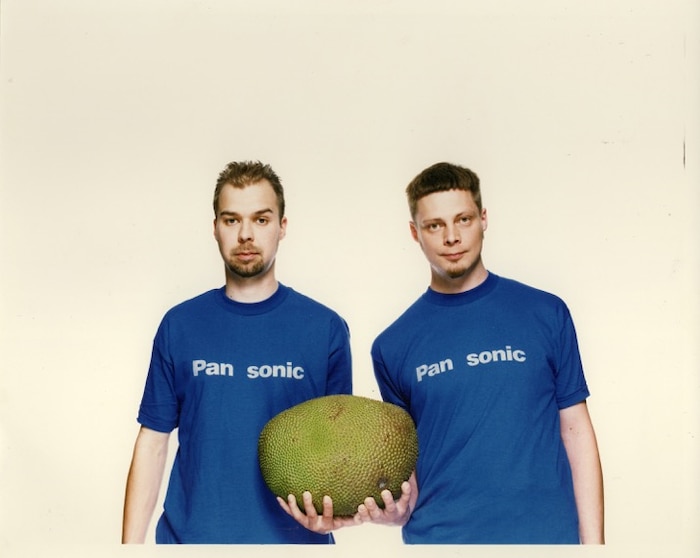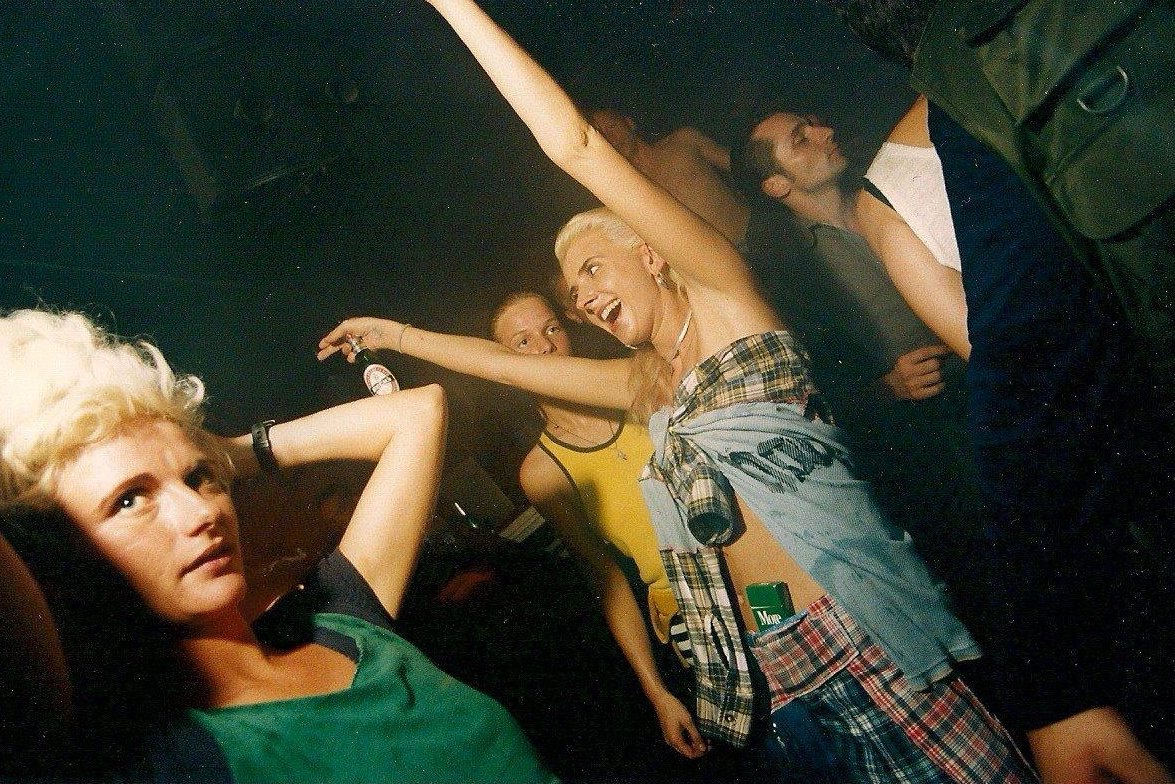Mika Vainio RIP
The Finnish experimental music touchstone, remembered by Blast First label boss Paul Smith

April 13, 2017
I live in the rural quiet of the South West of Ireland these days. Around 3 PM my wife gently wakes me from my post-lunch suntrap catnap revelry; I’d dreamt again I’d heard a strange new music that I can never quite recall on waking, but always recognize when it finally arrives in the real world. Such events usually portend the coming of some new musical adventure. But instead, sadly it’s The Grim Reaper a’calling as Susan tells me my cell phone had begun to “blow up” with text messages from friends – initially a rumour looking for a denial – Mika Vainio dead?
Even in remote Ireland we remain connected; within 30 minutes or so, by bouncing a text off a Finnish friend who’s living in Buenos Aires and who personally knows Mika’s family, his death is quickly confirmed. An accident. One that has probably been waiting to happen for some time it seems. Mika’s luck finally ran out on him, and we’re all the worse off for that.
Bugger – we’d only last week arranged to meet up in New York in July for Alan Vega’s first anniversary memorial. I’d just convinced Mika to play in New York again, and he’d come up with a way to work live with some lost VVV (Vainio / Väisänen / Vega) tracks to fittingly pay tribute to our dead hero. Alan had been a touchstone in both of our lives and we both were honoured to know and work with him.
I’d also bought a copy of Henry Horenstein’s Honky Tonk: Portraits of Country Music to give to Mika a while back, but the opportunity had not yet come up. Beautiful pictures I knew Mika would really appreciate and enjoy. I was looking forward to sitting and talking to him again about the people in the shots. Mika knew a lot about music of all kinds and it was often easier to get him to talk about others than himself. This would be a sad and emotional time for us both, but the book would give us a lift.
My mind goes back to our very first meeting (also in New York) in January 1995.
I am in New York for our Disobey club events, currently in an airport shuttle service van to collect the mysterious new souls joining our rag-tag family. I’m running late due to the usual Bushwick Avenue traffic snarl-up. I dash into JFK Arrivals to find three bodies slumped around a ceiling column. Their 4 PM FinnAir flight direct from Helsinki had landed some 40 minutes earlier than scheduled, and I was running 30 minutes late due to the traffic.
They had sailed through a deserted Immigration and cleared Customs in record time. Thus collectively the Sähkö-men had taken up a forward defensive position as if readying for some military last stand. Their equipment and bags were heaped in front of them as if to give them cover from any incoming enemy fire. No one was talking, no one was smiling. Weary or wary (I couldn’t tell), their eyes turned to me as I made my no doubt over-zealous jibber-jabbering welcome – silent nods of acknowledgement, neither friendly nor aloof. “Okay, let’s go...!”
We are all now in the waiting shuttle van. One of those beautiful cold, clear sunny New York winter days where the dry cold catches you in the back of your throat every time you inhale. I’m in the front seat with a stoic Asian driver, the Sähkö-men are all in a row at the very back of the van. I’m soccer mom picking up the kids, fussing over them. We begin what becomes a strangely silent journey, interspersed only with those high-velocity airport terminal road construction assault noises JFK seems to have specialized in for just about forever – the USA’s standard operating procedure for visitor acclimatisation to the verisimilitudes of New York City life at the end of the 20th century. Let’s knock that sensitivity right out of you before you are even a mile in-country, boys.
We inch out into the 24/7-stalled freeway traffic: cone-farmed, herded, Land of the Free. Outside, car horns blare, curses are launched, outer taxi doors are slapped in defiance and the full international guide to insulting gestures are practiced with a vigour and enthusiasm you rarely see elsewhere. Inside the van, stillness... silence. The driver looks over to me with a quizzical glance. “They are from Finland,” I offer. The driver shrugs.
Maybe a full 20 minutes elapse. Then a voice – even, clear and without any particular emotion – speaks: “Is the Bruce Gilbert here?”
“Yes,” I say, happy communication has been initiated. “He’s waiting to meet you all in a bar in Manhattan. We are going straight there.”
No comment ensues. No reply at all in fact. Communication breakdown already?
Silence, just a very long silence, possibly punctuated by an even longer silence. No exchange in any audible language is made between the Sähkö-men themselves.
I glance perplexed into the van’s rear-view mirror. The visual is equally concerning: three enigmatic stone faces, no flickers of emotion of any sort. The van driver gestures towards the radio – circuit-break the silence perhaps? I shake my head – we will wait for further contact.
After what seems like an eon, but maybe only ten more minutes of clock time, the same voice speaks (which I have now observed is the one I can recognize as Mr Mika Vainio). “Is the FM Einheit here?” Affirmative. “Mufti is in the bar with Bruce Gilbert and the others, waiting for you.” Silence. Hmmm, I think to myself, this going to be an interesting few days.
So how had we got here?
Enter one Mr John Dutton, an all-round good bloke and one time Mute Records front-line sales coordinator/warrior. He’d left the company some time before to follow his love-sick heart and a new life in the US of A. I can’t recall where we had met, but I must have run into him at some gig in New York whilst he was working for Watts Music of New Jersey, one of those East Coast “dance”/ hardcore techno record distributors that shovelled out hot club toons by the pallet load.
Watts had picked up the U.S. distribution for Sähkö Recordings at the previous year’s New Music Seminar. Now John knows his music, and guys that do the kind of job he does do not get easily excited, unlike those of us giddy giggling tail-chasers from the land of “Artists & Repertoire.” He is someone whose recommendation comes rarely and should certainly be listened to as a priority. “One track sounds just like they’ve left the fridge door open,” he advises. “Another has this weird rhythmic thing going – you’ll love it.” Shortly thereafter a package turned up from John with (I think) the first four or five Sähkö 12”s.
It was Love At First Listen and the fax number on the rear of a sleeve was the only contact point. I was hand-writing my love note before the I’d even got to the B-sides. Apparently (I learned later) John had already previously sent a Sähkö package to Daniel Miller but it had not reached his lobes (tho’ to be fair, this was at a time when Mute Records A&R received at least a weekly sackful of unsolicited entreaties from artists/managers/agents around the globe).
By happy chance, a “Sähkö team” was heading over the following week to London to play the techno room of one of those multi-chamber, fluorescent u.v.-netted, industrial-grade, lip-chewing ’90s club nightmares. The Orb were DJ’ing the main room to a disgruntled audience in search of Freedom through the tyranny of a techno beat (and don’t play me nothing else thank you very much). Susan and I dragged the visiting wunderkind guitar-mangler Caspar Brötzmann to the Brixton side-street club where a bottle of beer costs the price of a meal and the ambient sound level reduces all conversation to a primal yell or knowing nod ‘n’ wink.
The side room was busy when Team Sähkö started promptly at their advertised time. So busy in fact that we couldn’t catch sight of who was making the music. They all bent, studiously heads down, over their machines. As that then unfamiliar warm motoric analogue fug filled the room, got louder, then louder still, my idiot grin widened. Bass tones flapped the trousers and tickled the testes. Susan angled closer and Caspar checked his watch.
Ten minutes into the set, the room was emptying apace while Sue and I were magnetically pulled TOWARDS the sound. Three young-ish techno types, their hands on clearly not shop-bought ‘tronics, were ever so slightly bobbing their heads in unison. At 12 minutes in it got even louder and, on a mid-beat THUD, the PA blew and what little light there was extinguished. The emergency lights came on. No sound returned. The dozen or so surviving witnesses cheered and one player, a Joe 90 bespectacled type on the right wing of the trio (who turned out to be Jimi Tenor and who later so kindly played at our wedding reception when Susan and I married in 1999) smiled warmly and gave a slight bow.
I rushed up to him to say how great the short set had been. Their blowing the PA gave the whole affair a frisson of punk rock, an unusual feeling in a techno club context. “Thanks – we got to go,” and they all disappeared.
The two other members for this outing were Sami Salo and Ilpo Väisänen. Mika (I learned much, much later) had not come on this trip – depressed, defeated even perhaps, as he felt his self-released music had slipped out into a void, unnoticed. Me, I went home evangelised. “I must get in contact with the mysterious Sähkö-men and invite them to play at one of our Disobey club nights.”
Now, I never established exactly where the Sähkö fax machine lived, in an office or in label leader Tommi Grönlund’s apartment or wherever, but apparently he glanced at my one page fax of hand-scrawled invitation on our headed notepaper and then... binned it.
The Blast First (from politeness) name meant nothing to Mr G. He was an electronic music man through ‘n’ through, techno by persuasion and faith and on his own evangelical mission to convert the world to a church of his own construction and design.
Indie rock labels with a track record for new American guitar-based artists of course did not register on his radar AT ALL! Fortunately for me, fate played a significant hand, as Mika visited Tommi at the fax machine location that very day and, glancing down at the nearby waste paper basket, recognized the label name. Mika’s musical knowledge was exhaustive, his life blood, his heart beat. He fished the page out of the bin... CONTACT.
Disobey was soon venturing out from its small north London home to play in New York at the then-new iteration of The Knitting Factory. Disobey had, in good part, been born out of my previous NYC-based operations and my frequent forays with Thurston Moore to experience his voracious appetite to swallow the flowering/returning free jazz scene whole (mostly via his near daily visits to the original titular Knitting Factory space on Houston between Mulberry & Mott).
We, the Disobey-ers (myself, artist Russell Haswell and press-ganged professionally non-DJ Bruce Gilbert), had come to New York to raise awareness for our deliberately misshapen mission, a multi-music, multi-genre, multi-media series of gatherings somewhat ahead of The Curve, as we were amazingly still living in a time when even the visionary likes of The Wire magazine still did not review live events!
Russell had somehow managed to convince the Aphex Twin to “come with” on our trip, and to repeat his double-dare-you sandpaper “records” DJ set we had premiered earlier in London.
The line-up for our two-day run was as follows:
FM Einheit & Caspar Brotzmann
Richard D James (AKA Aphex Twin)
Stewart Home (performance writer)
Band Of Susans
Bruce Gilbert
Sähkö Recordings (using a “Complex Sound Generator”)
Tickets $10
EVERYONE I had played the Sähkö records to had absolutely loved them and curiosity as to who these young turks might be was at a high, so I had organized the welcoming committee of all our Disobey family to gather at Milano’s Bar, known locally as The Veteran’s Bar, as it was populated by a dwindling coterie of Vietnam vets that gave the bar a certain notoriety and err…edgy vibe that for years kept the local hipsters at bay and drink prices affordable.
Our crew had been in residence since mid-afternoon, and the Disobey assembly was affably buzzed (“all lit up like Christmas trees” as The Mekons so vividly sang). Meanwhile, back in The Van... silence reigned hard.
Then another transmission: “Does the Aphex Twin come here too?” enquired Mika.
“Yes, indeed, EVERYONE is at the bar to greet you.”
Silence.
Eventually we arrived at Milano’s. The van driver refused my cash tip: “You gonna need all the money ya got with those dudes.”
A whirlwind of greetings, compliments and enquiries ensued as to how they made their fabulous sound, could we see the Complex Sound Generator, etc. etc.
Initially Mika seemed somewhat shocked.
Not so much that these people HE admired had heard and loved HIS music, but more that they were REAL living, breathing people he could hang out with.
Not too long into the evening, Mika smiled.
When Mika smiled, it was like the sun coming out.
He beamed his beautiful smile, nodded to me and said… absolutely nothing.
Some years later Mika told me he had originally thought that Tommi Grönlund was just bullshitting him to get him to actually take the flight to America. He often said how he almost didn’t come and how, on that particular day, his life changed so much (and so did ours).
The Disobey NYC gigs were not well attended but the Sähkö boys2men (soon to be Panasonic) rocked the house. That sound through a big sound system was really something quite special to behold.
After the first gig, rolling back into our Off Soho Disobey frat house, I see Mika and Ilpo sat outside the hotel on the sidewalk passing a bottle of beer. They are singing what I take to be some old traditional Finnish folk song. “No,” they reply, “it is the song of a TV advert for a Finnish bank” – their equivalent of “We’re in the Money”!
Much great music poured out of Mika under a panoply of names and many different record labels. He was often hard on his compadres; Sami soon left to do his Finnish Army National Service and never returned.
Mika and Ilpo moved to Barcelona and the regular sunlight and beach life lifted them both for a good while. They/we had many adventures together and their music became popular with high fashion houses and contemporary dance companies around the world. People could really feel that music – it propelled the body.
Around 2008, Pansonic got “put in the deep freeze” as Mika preferred to describe it.
As far as I know, he never explained why, and it left his musical partner Ilpo out in the cold without any real acknowledgment or even agency on his own considerable role in forming the Sähkö/Pansonic sound. Pansonic was my main contact with Mika and there is a brief history of our adventures here.
Ilpo has for some time now lived out in the wilds of Finland, enjoying his love of deep bass tones and home-grown.
Music and art drove Mika’s entire life. And Mika was no miserablist; he loved life – reggae and rockabilly (his favourites) are party and people musics. He relished good food of all kinds and was always, always, always a sharp dresser with a fine eye for detail. He enjoyed foreign travel (but disliked any extended music touring) and experiencing new cultures. He was widely read and could be very animated on a wide range of topics if the moment allowed.
He operated more on the old Finnish construct – you listen intently, you VALUE the conversation and consider your own thoughts, THEN you speak. It was rarely a mode that worked well with the modern world. He remained doggedly at a remove to most people.
Over the years it always took a little time for me to get back into “Mika mode.” His face had a predominantly blank pre-set that (even when drunk) rarely registered conversational emotions, making him hard to “read.” No shorthand to his internal feelings.
So you had to listen hard.
He was often a very humorous fellow to be with, with a dry, understated wit. Certainly he had his problems, often more so than most artists do. Demons even – depression and drink is always a bad combo. He felt life deeply and seemed to have no ability to protect himself from those feelings, good or bad.
One look at the title and cover of Mika’s 2011 solo album Life (…It Eats You Up) on Mego will tell you more than you should ever need to know of his difficulties. But listen to pretty much any of his work to hear his ability to access his heart to make huge, unique, highly emotional musical statements. He’ll be deeply missed, and by many. His music remains to remind us all of this complex, truly fascinating human being and world-class artist. RIP Mika.

